It has been more than five months since I last posted a feature in this blog. Not only that l got busy with my work load but i was also burned-out with the series of chess activities that i participated or organized thus the need to rest and hibernate. Depite my hibernation, I did not stop playing at chesscube.com with the sole aim of reaching 2200 rating. I played mostly 5 minutes blitz game with occasional 3 minutes/game. Last August 8, 2011 I hit paydirt as I reached the 2200 mark for the first time. I reached my peak rating of 2240 until successive losses once again brought my ratings down.

Allow me to show to you the game that I considered the most critical in my personal quest. According to chess experts, one way of improving your play is by analyzing your games. For you chess enthusiasts out there, let's try to examine one of the most agressive lines in the Caro-Kann- The Bayonet Attack.
[Event "ChessCube Game"]
[Site "www.chesscube.com"]
[Date "2011.08.09"]
[Round "-"]
[White "bw-metrolirot@chesscube.com"]
[Black "tweethart10@chesscube.com"]
[Result "1-0"]
[WhiteElo "2176"]
[BlackElo "2144"]
[TimeControl " 5 mins/game"]
CARO-KANN DEFENSE ADVANCE VARIATION - BAYONET ATTACK
1. e4 c6 2. d4 d5 3. e5 Bf5
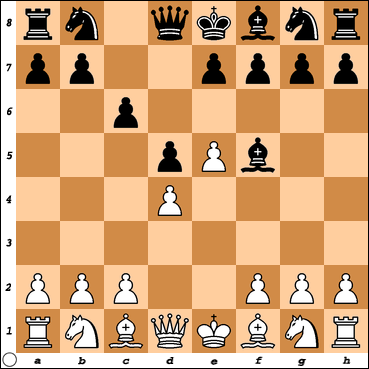
The Caro-Kann advance variation has made a comeback and has now supplanted the classical variation as the most popular line in the Caro-Kann Defense.
The Advance Variation has been revitalized by aggressive lines such as the Bayonet Attack (4.Nc3 e6 5.g4), a popular line in the 1980s and later favoured by Latvian Grandmaster Alexei Shirov, or the more positional line 4.Nf3 e6 5.Be2 c5 6.Be3, popularized by English Grandmaster Nigel Short thus the line has been referred to as the Short system. This line was often seen in the 1990s but is now considered the main line in the Caro Kann.
4. Nc3 e6 5. g4!? Bg6 6. Nge2
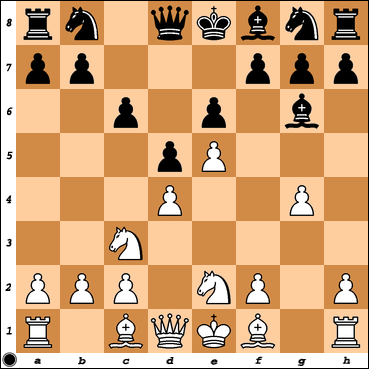
This is the tabia of the Caro-Kann Advance- Bayonet attack. The move 6. Nge2 is very important so as to meet 6... h5 with 7. Nf4!
6...Nd7
This is one of the sidelines of this variation although it can transpose to the main line. The main move is 6... c5. IM Byron Jacobs, in his book " The Caro-Kann Advance ", explains why.
" 6... c5 is the most thematic move according to NImzowitschian tenets; ...c6-c5 strikes at the base of the pawn chain while White is unable to suport it by c2-c3. But there are dangers for Black too as he has still only developed one piece. If white succeeds in removng the e6-pawn by f4-f5 and f5xe6 or...e6xf5 then the d5 pawn will be vulnerable ".
7. h4 h6 8. Be3 Ne7 9. Qd2
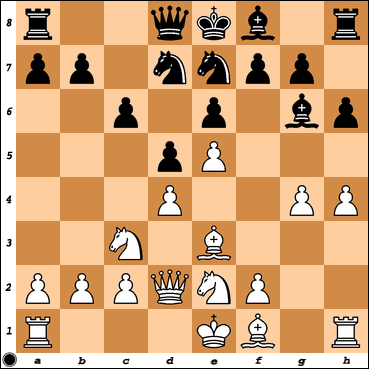
More precise is 9.h5 totally eliminating the ...h5 counter-play for Black.
Play may continue with 9...Bh7 10.f4 c5 11.Qd2 Nc6 with slight adavantage for White as in the game Kotronios, Vasilios 2570 vs. Nikolaidis, Joannis 2505 Corfu, 1995 1-0 31 moves.
9...c5?!
Thematic but not the best move. Black could have fight for the iniative by playing 9...h5! as White's 10. Nf4 is not that strong anymore as Black's bishop in g6 is now well protected by his knight at e7.
10. f4 Nc6
10...h5 could now be effectively answered by 11.f5! with complicated play..
11. Bg2 cxd4 12. Nxd4 Nxd4 13. Bxd4 Bc5 14. O-O-O Bxd4
15. Qxd4 Qb6 16. Rhe1 Qxd4 17. Rxd4 Rc8 18. f5!
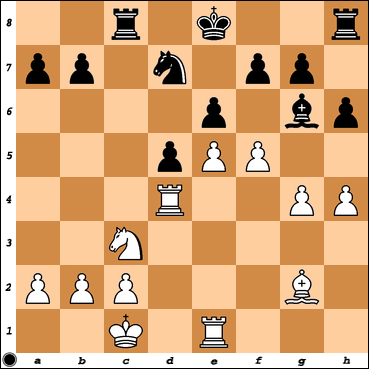
Black has managed to exchange major pieces and if allowed to consolidate into the endgame, would have enjoyed an advantage due to the open c file and his good bishop at g6.
18... Bh7 19. Nxd5!?
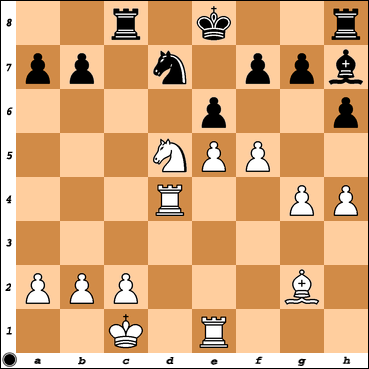
White could not resist the temptation to sacrifice but considering that this is a 5 minutes blitz game, the resulting complication clearly favors him. Houdini suggest instead 19.Nb5 Ke7 20.Rf4 with slight advantage for white.
19...exd5 20. e6 fxe6 21. Rxe6+ Kf8 22. Bxd5 Nf6?
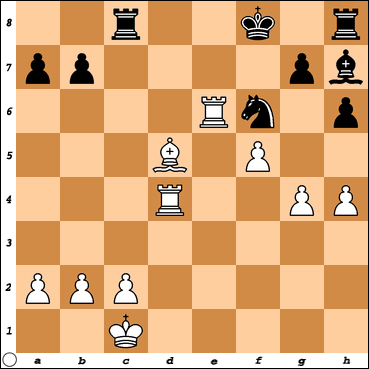
22...Bg8! 23.Bxb7 Rc7 23. Red6 Ke7 and it would be white who would
be fighting for equality.
23. Bxb7 Re8 24. Ra6 Bg8 25. Bc6 Rc8 26. Bb7 Re8 27. Rxa7
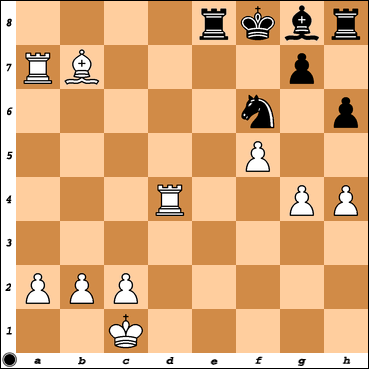
With 3 connected pass pawns in the queenside, white is on the road of victory.
27... Bf7 28. Bc6 Rc8 29. Bb7 Re8 30. b4 Kg8 31. Bc6 Rf8
32. b5 Kh7 33. g5 hxg5 34. hxg5 Nh5 35. g6+ Bxg6 36. fxg6+ Kxg6
37. b6 Rb8 38. b7 Nf6 39. Rda4 Kf7 40. Ra8 Ke7 41. Rxb8 Rxb8
42. Ra8 Nd7 43. Bxd7 Rxb7 44. Bg4 Kf6 45. Be2 g5 46. a4 1-0
No comments:
Post a Comment